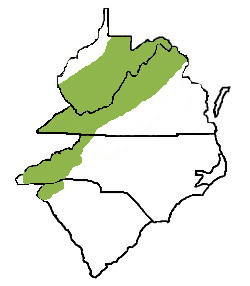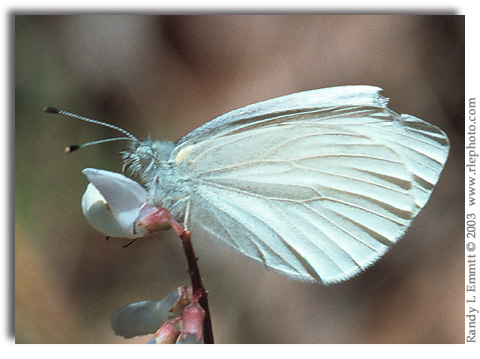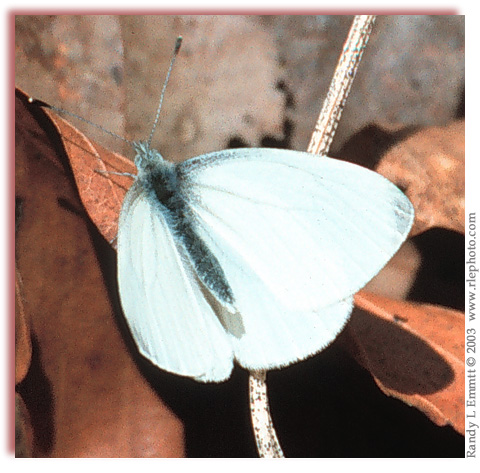Pieris virginiensis
Size:
Wingspan is 1 3/8 - 1 5/8 inches.
Similar Species:
Cabbage White
Habitat:
Wooded slopes in the mountains and cove forests. Mountain forests with
rich soils with an a abundance of wildflowers especially toothworts Cardimine
spp.
Range/Abundance:
Uncommon in the eastern and central Appalachian mountains of the region
during spring.

Flight Period:
Adults fly from mid April until late May in a single brood.
Larval Host Plants:
Toothworts Dentaria diphylla, D. laciniata and, Cardamine spp.
and mustards of the Brassicaceae family.
Comments:
This butterfly is declining due to the spread of Garlic Mustard Alliaria
officinalis which the adult mistakes for a good host plant lays eggs
on it and the larva dies after eating it. Logging and development also
are causes for the decline of this butterfly.
These white butterflies are the size of a Cabbage White, yet they are
easy to tell apart by the places they usually fly in. They tend to be
found moving up and down wooded slopes and rarely can be found outside
the woods.
When nectaring you can see that the forewings are completely white from
above, Cabbage White has black tips
and either one or two black spots in the center of the forewings.
The top photo was taken in Clay Co., NC on May 04, 2003. The second photo
is from Macon Co., NC on April 30, 2000. The bottom photo was taken in
a cove forest on April 30, 2000 in Buncombe Co., NC.
Start > Species List > Whites

